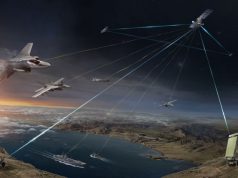The US Army has taken delivery of the second Long Range Radar-Enhanced (LRR-E) system, a productionized version of the LRR prototype.
While the system was handed over in December last year, the delivery was revealed earlier this week.
The Army’s Project Director Sensors-Aerial Intelligence (PD SAI) plans to build three LRR-E systems and install them onto three airborne reconnaissance low-enhanced (ARL-E) aircraft. The first LRR-E system was delivered in April 2018 and a third system is expected to be delivered mid- to late-2022.
The ARL-E is a manned aerial ISR suit of equipment integrated into de Havilland Canada-8 (DHC-8) aircraft designed for support to tactical forces of the full spectrum of operations. It provides a persistent capability to include broad-area surveillance and/or focused stare on target areas of interest (point or objective targets), electro-optical/infrared (EO/IR)/full-motion video (FMV), multi-mode radar, robust communications intelligence (COMINT), onboard collection, analysis, sensor cross cue, and dissemination through Distributed Common Ground System-Army (DCGS-A) enabled workstations.
The LRR-E is capable of detecting moving targets using two types of moving target indications (MTIs). Ground moving target indications (GMTIs) are used to scan for larger types of targets, such as vehicles, while dismount moving target indications (DMTI) focus on smaller targets, like people.
“While scanning an area, the operator will see dots overlaid on a map that registers the target’s location,” said Bryan Farley, LRR Lead for Program Manager Medium Altitude Reconnaissance and Surveillance System (PM MARSS). “Using radar cross section (RCS) indication, the operator can determine how big a target might be, how reflective it might be, and how fast it may be going.”
The LRR-E is also capable of synthetic aperture radar (SAR), a separate mode of the radar, which provides three dimensional radio frequency spectrum representation of the physical environment. This allows the operator to see a terrain through the lens of a radar.
The LRR-E is based off the vehicle and dismount exploitation radar (VADER). While VADER uses a Ku-band radio frequency, the LRR-E uses an X-band frequency. This allows the LRR-E to produce much longer detection ranges than VADER.
Another feature that makes the LRR-E unique is that the antenna is not mechanically swept. Unlike some other radars within the PD SAI portfolio, such as the small tactical radar lightweight (STARLite), the LRR-E does not use a gimbaled antenna.
“This change provides a few purposes,” Farley said. “Because they are mechanical, gimbals tend to break. If there are fewer parts on a sensor that can break, fewer parts will need to be replaced. It also allows operators to place their beams wherever they want, instantaneously.”
“Compared to VADER, the LRR-E pod is 3.5 feet longer and weights more than twice as much,” said Matt Perry, ARL-E Assistant Product Manager. “Since the ARL-E is a bigger platform compared to other platforms within the PD SAI portfolio, it is able to handle the bigger LRR-E sensor.”
Designed to be rapidly reconfigurable, allowing for five different sensor configurations, the ARL-E provides the combatant commander the ability to customize the sensor package for specific missions as needed.
PD SAI anticipates integrating the LRR-E into the first ARL-E spring 2022 with flight-testing to begin this summer. PD SAI is also investigating applicability of the LRR-E for future platforms as well as in support of the multi-domain operations (MDO) environment.



























